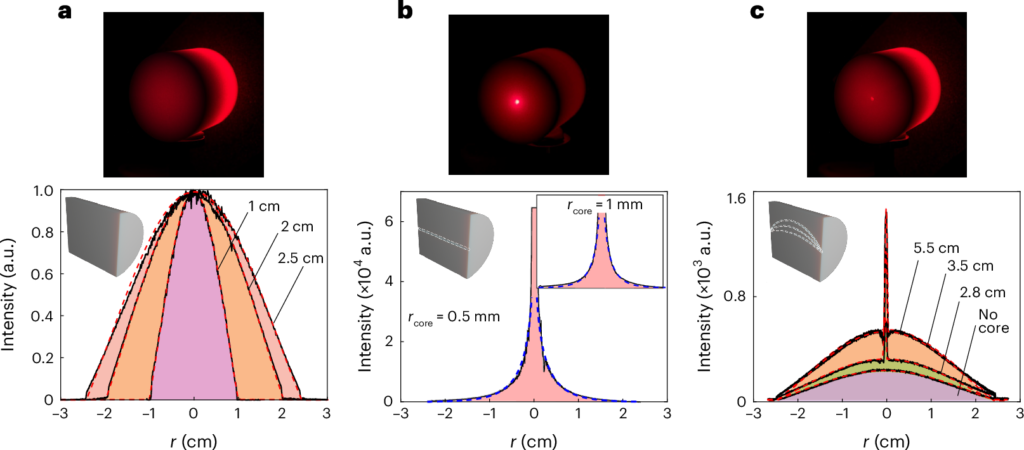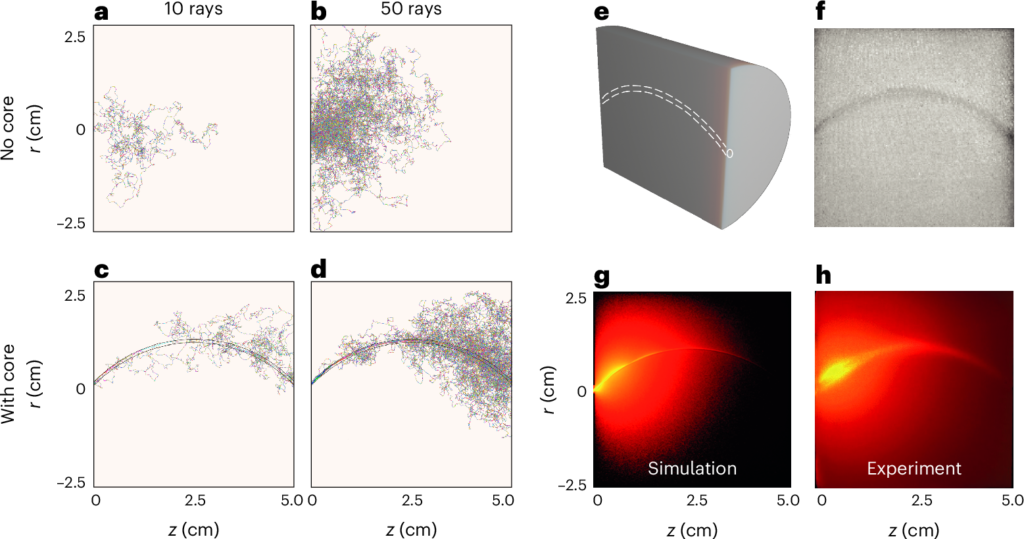Introduce
The control and transport of energy, such as light or electromagnetic waves, is crucial to many modern technologies, from the internet over fiber optics to light-processing chips in computers.
Normally, to do this, we have to use tricks like total internal reflection to “capture” the light and keep it on track, like in fiber optic cables. However, if the light enters opaque materials, like opaque glass or body tissue, it is easily scattered and cannot travel as far. This causes the light to lose energy and its ability to illuminate.
In this study, a group of authors from the School of Physics & Astronomy, University of Glasgow, UK and Wyant School of Optical Sciences, University of Arizona, Tucson, USA, proposed a new way, using the properties of diffusion (natural spreading) to help light “stick” to a certain direction without the need for a mirror coating like in optical cables.
Diffusion guided
By shining light through a core of 3D-printed plastic tubes placed inside an opaque (non-transparent) material, they found that light could be guided along this core without scattering around it, even if the core was curved. As the light passed through the diffuse core, some of the light was absorbed, but most of the light was retained and “guided” through the core. The core structure kept the light from scattering and focused it in a narrow space. This allowed light to travel farther even through opaque materials, like optical fibers, but without the complex design of fiber optic cables.

Compare the results of transmitting laser light in an opaque material tube with:
a. No transparent core
b. Has a straight transparent core
c. Has transparent core with different curvatures.
What happened
The core is more transparent than the outer opaque medium due to the uniform molecular structure of the core. This uniform structure helps light maintain its direction and is less scattered than when light enters opaque regions.
Backscatter into the core:
Some of the light is scattered outward when it encounters the interface between the core and the surrounding medium. However, because the external medium is more opaque and contains scattering particles, some of the light is scattered back into the core.
The backscattered light will continue to propagate along the core, creating a back-diffusion effect into the core. This helps to conserve some of the light energy and allows the light to continue moving through the core.
The process of light scattering outwards and then being reflected or diffused back into the core occurs continuously as the light travels along the core. As a result, the light remains in the core for a long time, although some energy is gradually lost with each scattering outward. The farther it goes, the more light is scattered and lost, causing the light intensity inside the core to gradually decrease.

c, d: has transparent core – light passes through the core, scattering increases towards the end.
Application potential
In the human body, light can naturally travel through cerebrospinal fluid or tissues such as tendons. Scientists hope this application will open up a new approach in medicine, allowing light to penetrate deep into the body without being invasive.
Thanks to this research, we can create devices that are more compact and easier to use. Telecommunications, medicine, and even particle physics can benefit from the ability to guide light through difficult environments with simple methods. For example, in foggy environments, this technology can help transmit signals efficiently without interference.
Original research report:
Mitchell, K.J., Gradauskas, V., Radford, J. et al. Energy transport in diffusive waveguides. Nat. Phys. (2024). https://doi.org/10.1038/s41567-024-02665-z

